RockShox SID Fork and SIDLuxe Shock Flight Attendant
MSRP:
- SID SL Ultimate Flight Attendant: $1,349 / €1,499 / £ 1,339
- SID Ultimate Flight Attendant: $1,449 / €1,599 / £ 1,429
- SIDLuxe Ultimate Flight Attendant: $849 / €949 / £ 849
Stated Weight:
- SID SL Ultimate Flight Attendant Fork: 1,480 g
- SID Ultimate Flight Attendant Fork: 1,624 g
- SIDLuxe Ultimate Flight Attendant Shock: 349 g
Sizes Offered:
- SID SL Ultimate Flight Attendant: 29’’ wheel, 44 mm offset, 100 & 110 mm travel
- SID Ultimate Flight Attendant: 29’’ wheel, 44 mm offset, 120 mm travel
- SIDLuxe Ultimate Flight Attendant: n/a
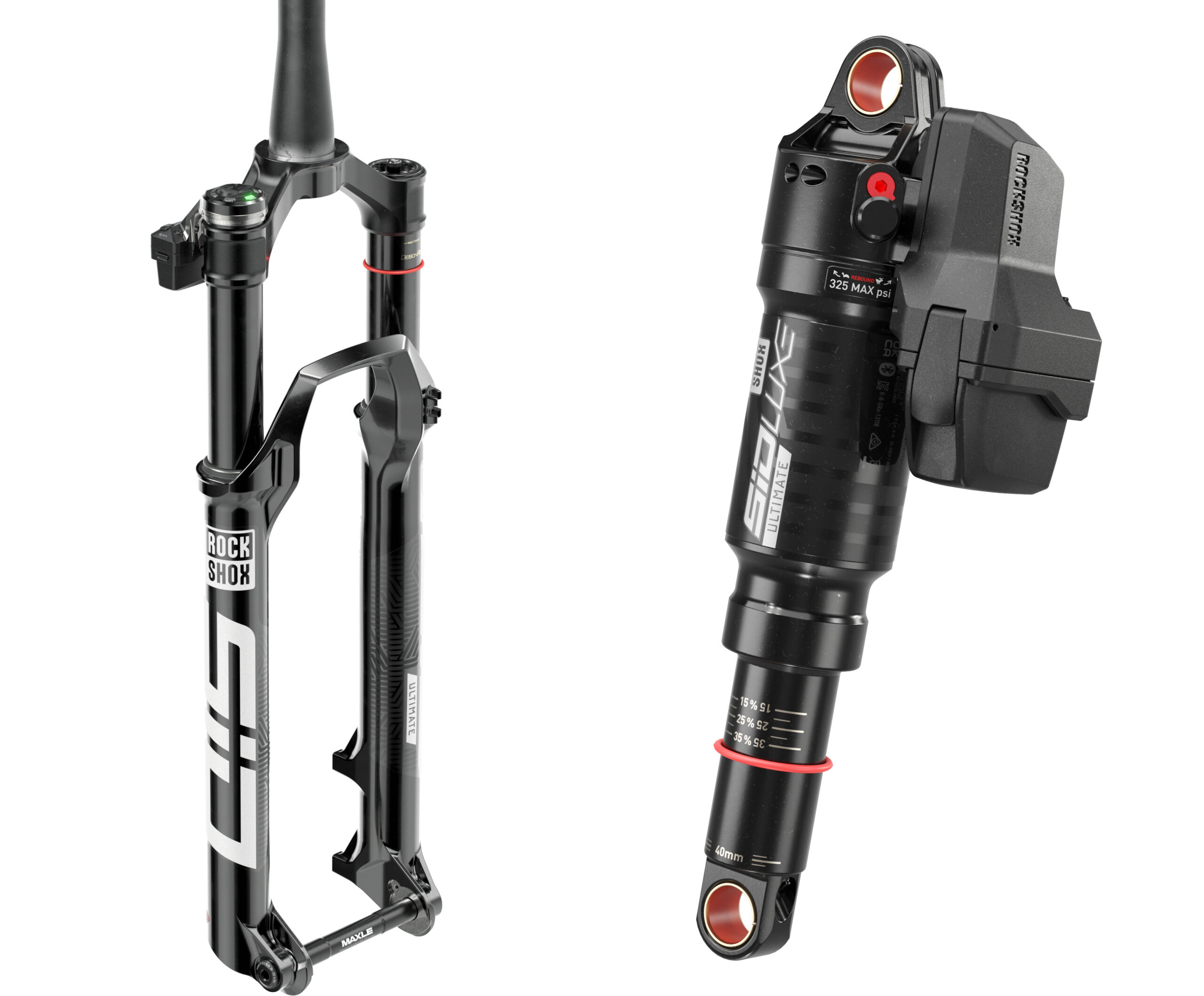
Intro
RockShox’s electronically-controlled Flight Attendant suspension has been around for a couple of years now, and we came away very impressed with how much it improved the pedaling efficiency of the long-travel YT Capra that we tested it on a while back. But a Flight Attendant option for the XC crowd had been conspicuously absent — until now.
RockShox now offers Flight Attendant on their SID forks and SIDLuxe shocks, and to go with it, they’ve added some very interesting new functionality to the system — which carries over to the existing longer-travel hardware by way of a software update. Let’s see what they’ve been up to.
Design & Versions
We won’t go too deep into the finer points of the Flight Attendant system here — for a much more in-depth look at how it all works, check out our Full Review of the original system from a couple of years ago. But the short version is that Flight Attendant is an electronically controlled suspension system that uses sensors on the fork and shock, plus one in the crank, to toggle the fork and shock between three different compression damping settings, to improve pedaling efficiency when you need it. When the system predicts that you’ll want the fork and/or shock firmed up for improved efficiency, it’ll do so wirelessly and automatically. When it thinks you’re likely to encounter a bump, it opens both, and the fork and shock behave normally. Both the fork and shock can separately toggle between three different modes, named “Open,” “Pedal,” and “Lock,” as the system deems appropriate (the fork can, at times, be one level softer than the shock), depending on what inputs the system is getting.
[There’s a lot of user control over how the system chooses to prioritize efficiency vs. suspension performance, including the ability to manually override it. Again, check out our Full Review for all the details.]
So what’s new? Turns out, a lot.
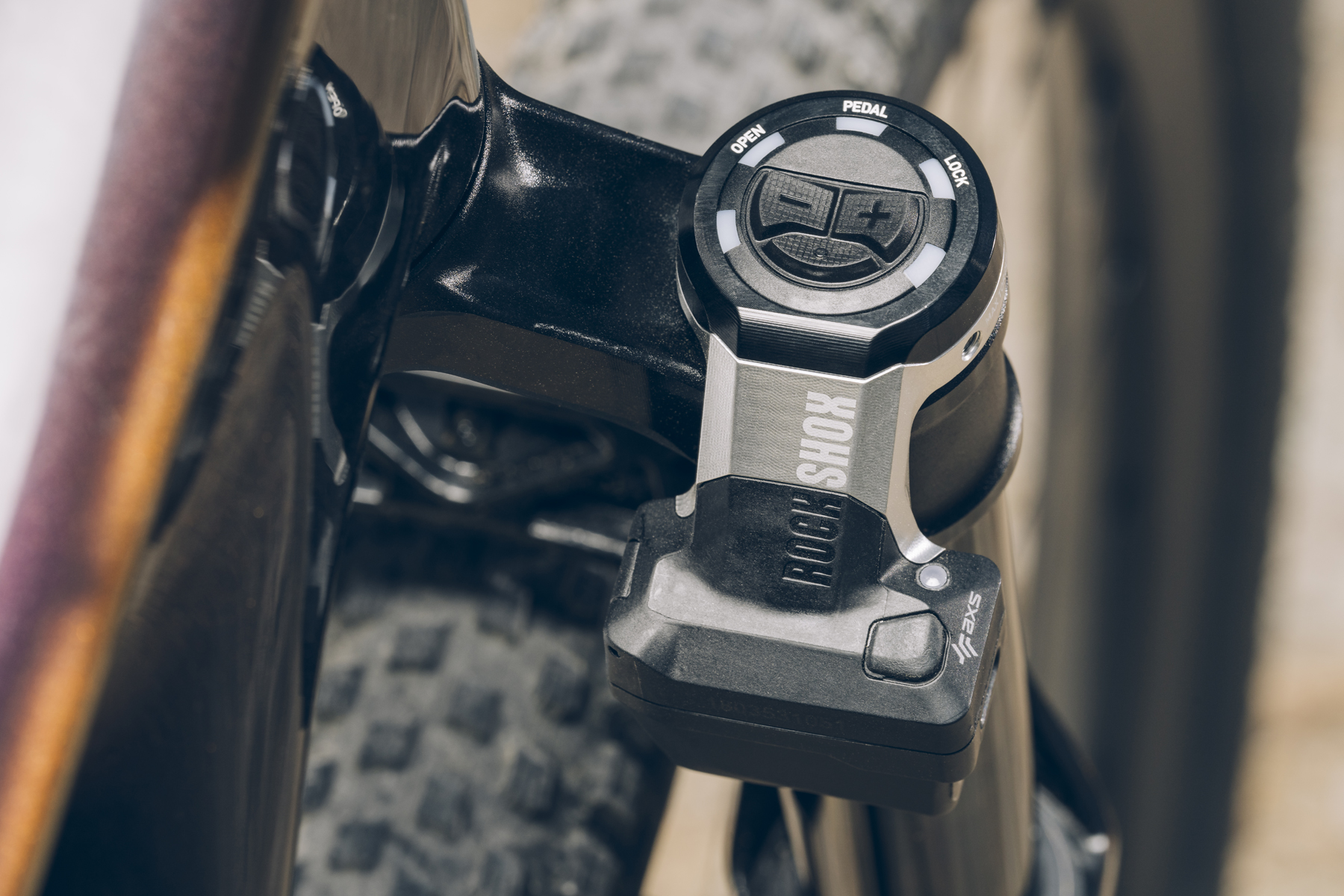
First up is that RockShox now has a Flight Attendant version of their SID and SID SL forks, and the SIDLuxe shock that goes with them. It’s the most XC-oriented version of the system to date, and Nino Schurter was conspicuously riding it during his record-breaking 34th World Cup race win in Lenzerheide last year.
In very crude terms, Flight Attendant is essentially an automatic version of the three-position remote lockout that RockShox offers on the standard SID family of forks and shocks. However, by controlling the system automatically, it’s possible to make vastly more changes to the suspension settings than a rider would do manually, and it can do so without the rider needing to think about it. According to RockShox, Nino Schurter’s bike made 1,325 changes to his suspension settings over the course of that Lenzerheide race — almost one every four seconds on average.
The SID and SID SL Flight Attendant use a version of the Charger Race Day 2 damper that’s been adapted to work with the electronic Flight Attendant control module. The control module functionality is mostly the same as the existing Charger 2.1-based Flight Attendant offered in RockShox’s Pike / Lyrik / ZEB forks, except without the adjustable low-speed compression offered on the longer-travel forks. The Charger Race Day 2 Flight Attendant damper in the SID and SID SL has externally adjustable rebound only, as does the SIDLuxe Flight Attendant.
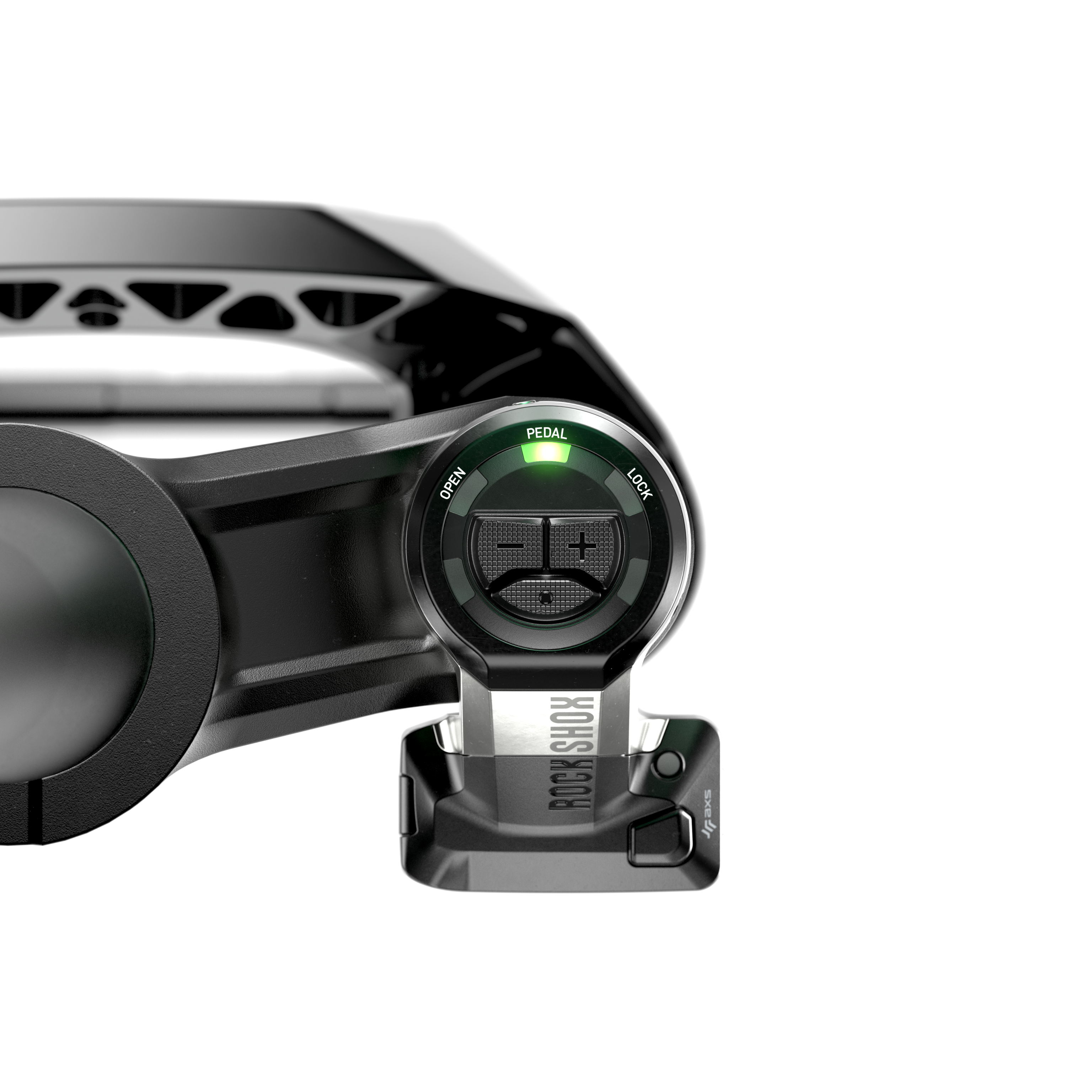
The added Flight Attendant control module and battery add about 140 grams to the forks and 100 grams to the rear shock, according to RockShox’s stated weights, but RockShox claims that the efficiency gains more than make up for the added weight. According to their own internal testing, a given rider was about 1.8% faster than the same rider on a manual system — which doesn’t sound like a ton but adds up to 96 seconds over a 90-minute XC race.
Adaptive Ride Dynamics
To go with the new SID family of Flight Attendant components, RockShox has added some new functionality to the system, which they’re calling “Adaptive Ride Dynamics.”
In short, by replacing the pedal sensor in the Flight Attendant system with a SRAM / Quarq power meter, Flight Attendant can detect how hard you’re pedaling, and use that information to better inform its decisions to toggle between suspension modes. This comes in the form of the spindle- or spider-mounted version of SRAM / Quarq’s power meter, as featured on various levels of their T-Type groupsets.
To do so, Adaptive Ride Dynamics categorizes your output into four “Effort Zones” (Low, Medium, High, and Sprint), based on the power meter data, and factors which Effort Zone you’re in as part of the decision-making process to set the Open / Pedal / Lock settings on the fork and shock.
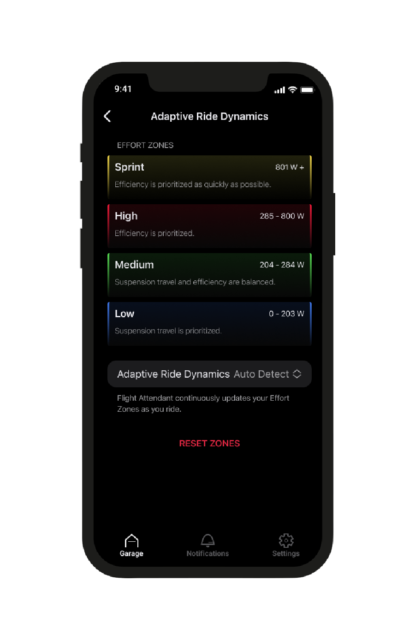
The Effort Zones don’t directly correlate to Open / Pedal / Lock settings on the fork and shock. Rather, they’re used as a more nuanced input than the simple binary pedal sensor, which can only tell whether or not you’re turning the cranks, not how hard you’re doing so. In theory, this allows it to make better decisions about which suspension settings to apply. The Bias Adjust setting and inputs from the fork and shock control modules also influence the operation of the system. Selecting a higher Bias Adjust setting will encourage the system to trend toward the Pedal and Lock settings more regularly and use the Open one more sparingly; putting down more power and moving into a higher Effot Zone will do the same.
Of course, different riders’ thresholds for the different Effort Zones are going to vary, potentially by a lot. When paired with a compatible power meter, Flight Attendant takes the power data from your last couple of rides and automatically configures the Effort Zone thresholds based on your actual power output. You can also set the thresholds manually in the AXS phone app if you’d prefer.
You can still run Flight Attendant with the more basic spindle-mounted pedal sensor instead of a power meter, but Adaptive Ride Dynamics won’t be supported. Adaptive Ride Dynamics is also not available on eMTBs at this time, but it is now available on the Flight Attendant versions of the Pike, Lyrik, ZEB, and SuperDeluxe with a firmware update.
Availability
RockShox is also opening up the aftermarket availability of the Flight Attendant system. The new SID and SID SL Flight Attendant forks are available on their own for $1,449 and $1,349, respectively; the SIDLuxe Flight Attendant shock retails for $849. You still need to run both a Flight Attendant fork and shock in conjunction with each other (and the basic pedal sensor or SRAM / Quarq power meter) for the system to function, but you can mix and match fork and shock levels (e.g., a Pike Flight Attendant fork with the SIDLuxe Flight Attendant shock) if you’re so inclined.
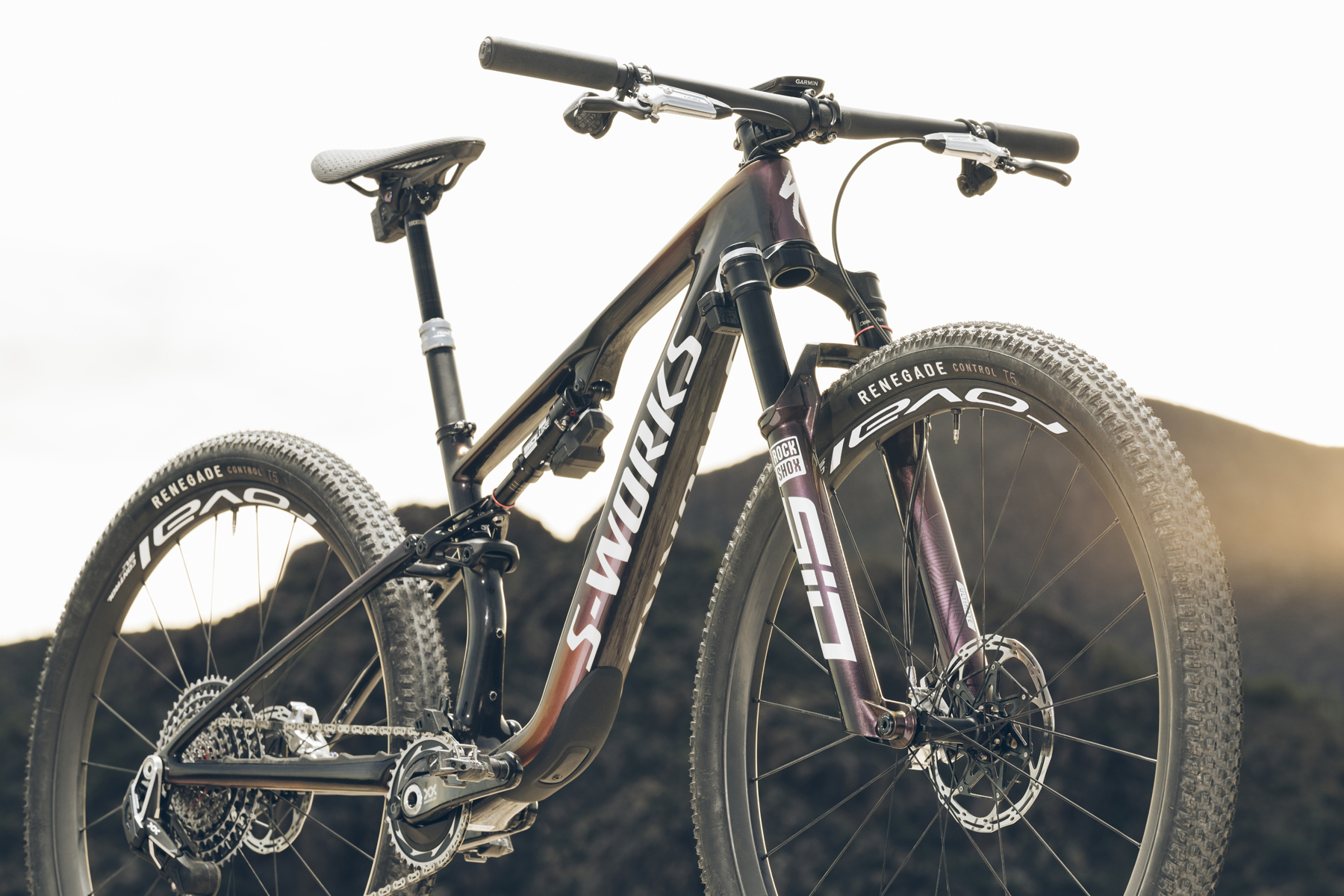
RockShox still recommends only running Flight Attendant parts on bikes where they’ve officially endorsed compatibility, mostly because the added control module on the shock, in particular, has the potential to cause frame interference issues and damage the shock and/or frame if they make contact somewhere in the bike’s travel. But the change of language to “we don’t recommend it” from originally only offering Flight Attendant on complete bikes is a notable one.
In addition to selling the SID-family Flight Attendant forks and shocks separately aftermarket, RockShox is offering the Flight Attendant Charger Race Day 2 fork damper as an aftermarket upgrade for non-Flight-Attendant SID and SID SL forks for 2024+ model year. The damper itself is shared between the two forks; the control module that sits atop it comes in two versions for the different fork models, so you’ll need to make sure to get the right one. The SIDLuxe Flight Attendant shock gets a different body to accommodate the control module, so non-Flight-Attendant SIDLuxes can’t be converted.
Some Questions / Things We’re Curious About
(1) We were quite impressed with how well the Flight Attendant system worked on a long-travel Enduro bike (the YT Capra), but how does it translate to the XC world?
(2) How much of a difference does the addition of Adaptive Ride Dynamics make to the overall performance of Flight Attendant?
Bottom Line (For Now)
We’d figured that a SID-family version of RockShox’s Flight Attendant system was coming for a while now — not the least because we’d already seen Nino Schurter riding it last year — but the addition of power-meter integration via Adaptive Ride Dynamics is an interesting touch that we didn’t see coming.
The original implementation of Flight Attendant already did an impressive job of predicting when to firm up the suspension (and when not to), so it’ll be interesting to see how much the addition of Adaptive Ride Dynamics changes things, and we’ll report back if and when we’re able to get on the new version to find out.

Bonjour
J aimerais commander La Fourche et l amortisseur pour un Scott spark rc wc2024 merci de votre aide prix et le délai ou les références pour les commander
Sportivement hermann